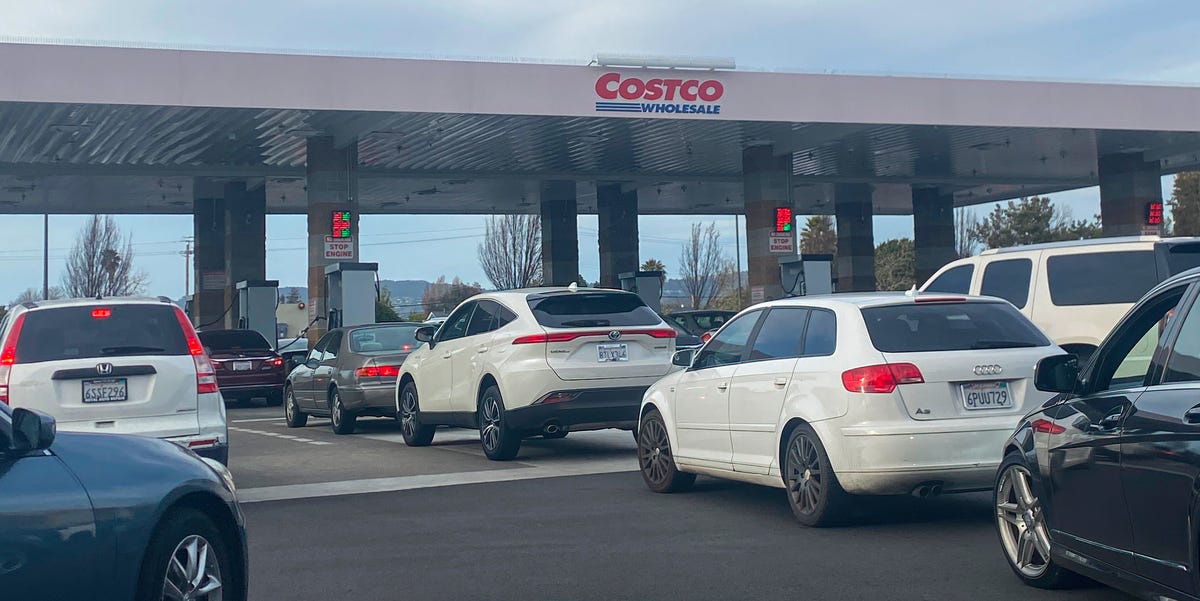
- NHTSA has announced that it will push required average fuel-economy figures to 49 mpg by 2029, but that doesn’t mean your future new vehicle will do anywhere near that number.
- According to NHTSA, the rule change will lead to price increases on new 2029 model-year vehicles by about $960, but the overall fuel savings from the improved fuel economy would be $1280 (which will vary, of course, depending on type of vehicle). Final picture: new cars could cost about $320 less to buy and own at the end of the decade.
- Another way to think about it, as described by Transportation Secretary Pete Buttigieg, is that if you’re filling up four times a month today, you’d only have to stop at a gas station three times a month if you’re driving one of these more-efficient vehicles.
It’s no surprise there’s some confusion in the wake of higher fuel-economy standards announced by the National Highway Traffic Safety Administration (NHTSA) announced earlier this month. The improved efficiency requirements are looking to result in a fleetwide average for new cars and light trucks of 49 miles per gallon by model year 2026. That does little to explain what the rules changes will mean for the average new-car buyer as the decade goes on.
As we wrote a decade ago when President Obama announced the biggest Corporate Average Fuel Economy (CAFE) increase in decades, there is a connection between a vehicle’s CAFE rating and the fuel-economy estimates that are printed on a vehicle’s window sticker. NHTSA said “Real-world fuel economy is generally 20-30 percent lower than the estimated required CAFE level.”
NHTSA’s rules will require an average increase in fuel efficiency of 8 percent annually for model years 2024 and 2025 and then 10 percent annually for model year 2026. But, as As NHTSA said in its preamble to the regulations, “Ultimate fleet-wide levels will vary depending on the mix of vehicles that industry produces for sale in those model years.” Buyers won’t necessarily see an 8 percent mpg jump between the 2023 and 2024 Hyundai Kona, for example, just that these higher targets will be hit eventually, meaning by the 2029 model year. NHTSA allows automakers to “continue working out compliance solutions for the regulated model years for three model years after the last regulated model year, in recognition of the fact that manufacturers do not comply perfectly with CAFE standards in each model year,” the agency said.
There is a lot of language in NHTSA’s 1230-page document about the new fuel economy rules describing what the agency can and cannot do when it comes to these “compliance solutions.” One sticking point for advocates of higher standards is that the government continues to rely on a method of calculating a company’s average fleet economy by using a footprint-based methodology. CAFE standards have for decades separated “passenger cars” and “light trucks” into separate categories, but new rules were introduced for the 2012 model year that set us on the footprint-based path.
The old rules had their own problems. The Chrysler PT Cruiser was considered a light truck, for example, despite sharing a platform with the Dodge Neon, and was thus subject to less stringent mpg standards. Because the PT Cruiser easily beat the truck mpg requirements, that gave Chrysler more breathing room to not make other vehicles in its lineup at the time as fuel efficient as they would have auto be if the PT Cruiser was considered a car.
Today, NHTSA uses the “footprint” approach, which is defined by the four points where the tires touch the ground, or wheelbase times track width. NHTSA makes clear in its document that it is operating under regulations that “[require] vehicles of differing sizes (footprints) to have different CO2 targets” and that these rules mean the average fuel-economy standards each company has to hit are based on the footprints found in the mix of vehicles it produces. By law, NHTSA has to regulate vehicles using attributes that can “be expressed in the form of a mathematical function,” and a vehicle footprint is certainly more mathematical than deciding that a gussied-up Neon is actually a truck.
In 2017, the Center for Automotive Research explained the overall benefit of this system. “The footprint model is intended to encourage manufacturers to make all light vehicles, regardless of size, more efficient,” CAR wrote. “This is an important difference to the non-attribute based average method used prior to 2012. With the non-attribute-based average method, companies could balance a product portfolio between small fuel efficient vehicles, and larger less fuel efficient vehicles . . . However, the non-attribute-based average method did not necessarily lead manufacturers to maximize fuel efficiency for larger vehicles. Instead, it may have focused fuel efficiency with smaller less expensive vehicles—and often deeply discounted prices.”
Despite some upsides to the footprint-based methodology, NHTSA admits that a problem remains. Since fuel-economy standards for each manufacturer are determined by its final model year production figures, and, as NHTSA writes, “generally, larger vehicles (i.e., vehicles with larger footprints) will be subject to lower mpg targets than smaller vehicles,” there remains a benefit to automakers to build larger vehicles since they don’t need to be as efficient.
Whatever the actual sticker number for new vehicles ends up being under these new rules, the cars of the future will get better fuel economy because of the new rule announced this week, and that should mean drivers will spend less at the pump. At the announcement ceremony, Transportation Secretary Pete Buttigieg explained one way that the new rules will help drivers.
“[In] today’s model year ’21 vehicles, the standard is 36 miles per gallon,” he said. “By 2026, it will be over 48. So what that means is a 33 percent gain, [which] means if you’re filling up four times a month that would become three times a month by model year 2026, based on those averages and of course that would save a typical American household hundreds of dollars.”
Buttigieg added that the new regulations can be considered a win for “every driver in America, but I would note it is a particularly big win for drivers in rural areas where residents cover more distance every day and fill up more frequently.”
There will be variance in how much the new vehicle will cost, too, for the same reason. Not surprisingly, NHTSA’s estimates about its final regulation “suggest slightly larger MSRP increases for light trucks and smaller increases for passenger cars.” NHTSA estimates that its updated rules will mean the average 2029-model-year vehicle would cost $960 more than the average car today (so expect to see more stories about cars getting more expensive) but the lifetime gains through fuel savings would be $1280, which means that buyers will save an average of $320 thanks to these more efficient vehicles. NHTSA admitted that it could have pushed for even more stringent rules, but said that if it had, the average per-vehicle cost increase could have exceeded $2000. The compromise numbers NHTSA ended up going with for the new rules were the “maximum feasible,” the agency said.
This content is imported from {embed-name}. You may be able to find the same content in another format, or you may be able to find more information, at their web site.
This content is created and maintained by a third party, and imported onto this page to help users provide their email addresses. You may be able to find more information about this and similar content at piano.io
#NHTSAs #Fuel #Economy #Rules #Drivers
Source link





